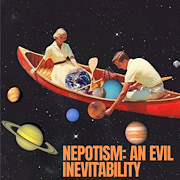|
It got people talking which is the purpose of a forum. It was a good question
|
|
|
|

|
| # ? May 25, 2024 00:15 |
|
Fuschia tude posted:I can't imagine that would correlate much at all with population-wide interest in a given topic even in a single country, let alone generally. Gross is based on a ton of factors, such as quality of the film itself to name only one (and possibly not a big one), plus style and technique, hype and marketing, annually cyclical and fad-based trends in genres, actors, directors, and other principals involved, critical acclaim or scorn (which is similarly uncorrelated), and even more soft factors. Yeah I wanted a qualifier that mostly meant, "not a random indie film" and don't really know enough about film to know what that would look like. You certainly wouldn't weight by how much they made; at best it would be a qualifier
|
|
|
|
euphronius posted:The entire state of Pennsylvania was clear cut. Literally every tree was cut down and burned for coke or sent down the the Susquehanna to Baltimore if i really feel like depressing myself i'll sit down for a few minutes and think about how we took a literal garden of eden and turned it into this 
|
|
|
|
CommonShore posted:The hardest contamination would be people who live in Rome now looking for stuff about it. that, at least, would be mitigated by the fact that they mostly speak italian and would search for "Roma", not "Rome"
|
|
|
|
euphronius posted:The entire state of Pennsylvania was clear cut. Literally every tree was cut down and burned for coke or sent down the the Susquehanna to Baltimore This, but the whole North American continent. BC is covered in trees, and still actively exporting them, but it's all artificial, and there is hardly any old growth left. And the current practice of clear cutting, sending in some crusty hippies to replant a monoculture, then clear cutting again 50 years later is probably not going to be sustainable for too much longer.
|
|
|
|
I mean the Midwest had almost no trees before western settlement started
|
|
|
|
continents do be big
|
|
|
|
Of course none of that was natural either. Americans had been managing that land for thousands of years and had cultivated the forests the way they wanted them to be. I'd prefer managed forests to strip malls, but no human has seen a genuinely natural landscape since long before recorded history. Except for Antarctica and the moon, I suppose. It was weird when I read about this stuff and realized that unspoiled nature hasn't existed for so long that we have no real idea what it's like. No one's ever seen it, there's no written accounts of it. An unmanaged, fully natural Earth must have been some wild poo poo.
|
|
|
|
Grand Fromage posted:It was weird when I read about this stuff and realized that unspoiled nature hasn't existed for so long that we have no real idea what it's like. No one's ever seen it, there's no written accounts of it. An unmanaged, fully natural Earth must have been some wild poo poo. One weird case is places like the Fukushima and Chernobyl exclusion zones, and Korean DMZ, where nature has basically been allowed to run wild. Except even there obviously an important aspect of the ecosystem (and source of the biodiversity in the first place) involves how the no-man's-lands abut human inhabited territory, and animals and plants can generally cross those borders at will.
|
|
|
|
Fuschia tude posted:One weird case is places like the Fukushima and Chernobyl exclusion zones, and Korean DMZ, where nature has basically been allowed to run wild. Except even there obviously an important aspect of the ecosystem (and source of the biodiversity in the first place) involves how the no-man's-lands abut human inhabited territory, and animals and plants can generally cross those borders at will. https://en.wikipedia.org/wiki/Korean_axe_murder_incident
|
|
|
|
There were some uninhabited islands out there too. Not many, but more than antarctica and the moon
|
|
|
|
Some managed habitats can be of the most biodiverse ones, especially in more temperate parts of the world where wild grassland herbivore megafauna have gone extinct. Particularly where everything was under ice during the last ice age, as many of todays native species colonised the landscapes northward shaped by humans. Difference is that those older agricultural practices has in large part been replaced by for example forestry and modern agriculture that is far more intensive and uniform. We dont longer need for agriculture to maintain meadows and pastures (and even less on marginal lands) to produce manure and keep livestock fed year round, or use wetlands for haymaking. Its all efectivized and we get intensively cultivated arable fields and forest monocultures. Meadows and pastures turn to forests, wetlands got drained for more uniform forests, mixed open forests go the same way. Before industrialized agriculture and farm consolidation policies, farming maintained a more varied landscape by necessity, and those that are still maintained or recreated today are mostly done so as direct conservation measures. Ofc, what i just described isnt the whole global picture, there are many examples of extensive habitat degradation before the modern age. It is a simplified summary of some of the processes that shaped the landscapes of Northern Europe that not that long time ago was a postglacial wasteland and humans got there almost from the start. Here, semi-natural grasslands, wetlands, old-growth and low intensively exploited forests became the richest habitats, and the ones that have seen most dramatic declines during the last 150 years or so. Conservation measures for several of these habitats and threatened species tied to them require some kind of active human management be it grazing, haymaking, burnings... Sometimes even infrastructure can be a part of this. As roadsides and track beds can serve as modern refuges for plant species dependant on dry open meadows and pastures on marginal soils. One of them correlates its distribuition pretty well with the Swedish railroad network in the southern half of the country.
|
|
|
|
Stringent posted:if i really feel like depressing myself i'll sit down for a few minutes and think about how we took a literal garden of eden and turned it into this You get a pretty good idea how europe looked like
|
|
|
|
Grand Fromage posted:Of course none of that was natural either. Americans had been managing that land for thousands of years and had cultivated the forests the way they wanted them to be. I'd prefer managed forests to strip malls, but no human has seen a genuinely natural landscape since long before recorded history. Except for Antarctica and the moon, I suppose. I'd argue south-west Tasmania is pretty close. Nobody's really lived there ever because it's too difficult. I think even the indigenous peoples kept mostly to the coast.
|
|
|
Elissimpark posted:I'd argue south-west Tasmania is pretty close. Nobody's really lived there ever because it's too difficult. I think even the indigenous peoples kept mostly to the coast. New Zealand 's milford track is basically a multi day hike through lands even the maiori only traveled through on rare occasions.
|
|
|
|
|
Koramei posted:This sounds like exploitation of particular kinds of trees rather than ships causing out and out deforestation by themselves. There's an ACOUP post that talks about tree requirements for iron production alone and it's utterly staggering: There are a few things I'm strongly suspicious of in the blog post. One is the relatively low yield of the bloomery. I've participated in one smelt, and watched many others. Lee Sauder, the foremost bloom smelter currently working, has recorded yields of upwards of 35% of the weight of ore, not the 16% quoted by acoup. Additionally, the modern charcoal I've used is often not very good, with maybe 1/10th to 1/3rd of its weight being insufficiently charred. This casts doubt on comments on the efficiency or inefficiency of 20th century vs. older colliery, because the uncharted wood is significantly heavier than charcoal. The rate of production suggested is also wrong. Bloomeries can produce upwards of 40kg of iron per day with two smelts, not 16. Last, I'll mention that Sweden did not have serious problems with deforestation in the 18th century. Reinhold Angerstein, a Swedish industrial spy traveling in England, noted that the English did not manage their forest as well as the Swedes did. When an area of timber was cut for charcoal in Sweden, trees would be replanted, while in England the soil was left bare. This doesn't seem totally right to me, and I suspect Angerstein is missing some aspect like the land would be given over to sheep farming or something. Colliery is not his main interest, so this is a passing comment and not the result of thorough investigation iirc. Still, it is important to consider that proper management of timber, as any other crop, meant that it could be sustained. Keep in mind at this time only Russia produced more iron than Sweden within the Atlantic sphere at this time.
|
|
|
|
Rodrigo Diaz posted:
It became a pressing problem mainly towards the end of the 19th century as saw works , iron and charcoal production and other industrial processes really took its toll and lead to major forestry reforms in the turn of the century to comprehensively secure forest regeneration for future use. A 100+ years later the pendulum has really swinged, with overencroaching forests becoming a conservational conflict of interest agains the economical interests forestry stakeholders.
|
|
|
|
I'll add that ACOUP's sources on the practical side of ironworking range from somewhat dubious to amateurish. Alex Bealer's "Art of Blacksmithing" was written basically at the lowest historical ebb for the trade in the US, and much of the knowledge and understanding that we have today was not readily available. As a resource on the practicalities of historical forging, Bealer has some insights but they are mixed in with a lot of conjecture and attempts to make do, rather than coming from a voice of real experience. ACOUP also says that nailmaking typically takes three heats, and a "board" would be used for heading. This is laughable. A board would not stand up to the hammering or the heat. Instead at the very least a punched plate would be used, but more likely a dedicated header, which had a kind of peaked button to support the nail and allow for angled blows from the hammer. A competent nailer produced nails within a single heat, and the finished nail should be ejected from the header still glowing. There are multiple historical films showing nail production by hand at a professional level of competence. This is my current favorite because it shows some of the details of the nailers' shop: https://youtu.be/3WNvWmQ_ldE Edit: theyre not making standard common nails but this one has sound and the narration is in Czechoslovak: https://youtu.be/Nma4R8izg9o Falukorv posted:It became a pressing problem mainly towards the end of the 19th century as saw works , iron and charcoal production and other industrial processes really took its toll and lead to major forestry reforms in the turn of the century to comprehensively secure forest regeneration for future use. A 100+ years later the pendulum has really swinged, with overencroaching forests becoming a conservational conflict of interest agains the economical interests forestry stakeholders. That's interesting! Thanks. Rodrigo Diaz fucked around with this message at 18:16 on Jul 4, 2021 |
|
|
|
Lot of ancient Greek/hellenistic stuff goes from "Wow this is pretty interesting" to the express train to  town real fast. town real fast.
Lawman 0 fucked around with this message at 18:15 on Jul 4, 2021 |
|
|
|
Lawman 0 posted:Lot of ancient Greek/hellenistic stuff takes the train from "Wow this is pretty interesting" to the express train to What do you have in mind?
|
|
|
|
KYOON GRIFFEY JR posted:I'm partial to 1798 Can anyone explain this one? Rodrigo Diaz posted:Last, I'll mention that Sweden did not have serious problems with deforestation in the 18th century. On a whole, yes, but the limited distance you can transport charcoal in pre-modern / early modern times did result in the movement of ironworks. Edgar Allen Ho posted:Doesn't Denmark or Sweden have one of the national parks that was originally set aside to make boats? Then in like the 1960s the park rangers went "my king, finally, the trees are mature enough to upgrade the fleet" Visingsö is a really nice weekend destination. 25 km long, lots of places to stay and bike rentals. An important thing to remember about Visingsö was that it's as artificial as it comes. The (formerly?) Brahe-owned lands around Vättern were also part of the same system of Strategic Oak Reserve, but were already covered in thick forest. Visingsö at the time was completely denuded, poor and mostly used for grazing and crops. Starting the oak plantation began with a decades-long process of planting trees to provide shade for young oaks, encouraging them to grow straight and, importantly, quickly. After that, they they had decades of trimming to prevent the formation of knots in the lumber. Nowadays, the forest is beginning to stablize, since it's been harvested so infrequently, and you can usually pick out the 19th century trees very clearly because of how artificial they look.
|
|
|
|
Groda posted:Can anyone explain this one? Napoleon invaded Italy, established the Roman Republic.
|
|
|
|
Rodrigo Diaz posted:I'll add that ACOUP's sources on the practical side of ironworking range from somewhat dubious to amateurish. Thank you for this critique. Out of curiosity do you have an image you like to demonstrate the difference between a punched plate and a dedicated header?
|
|
|
|
Groda posted:Can anyone explain this one? Pope deposed and sent in to exile, where he died, ending the temporal power of the Roman / Papal State based in Rome, which you can argue was the continuation of the Roman Empire.
|
|
|
|
So I get a genomics news service roundup in my inbox for work, and this article came up: https://www.cell.com/cell-reports/fulltext/S2211-1247(21)00645-8 They found and characterised Yersinia pestis (plague) from a dude buried 5,000 years ago. Apparently his corpse was riddled with it, but they argue he probably got it from a beaver bite. They were also responding to a 2019 study: https://www.cell.com/cell/fulltext/S0092-8674(18)31464-8 That one dug into other people's sequence data from ancient bones, detected Yersinia pestis, and mapped out the spread of the strains. They even proposed that plague may have been a factor in the Neolithic decline. But the more recent study argued that the strain they found lacked the genes necessary for transmission via fleas, and that there wasn't enough archaeological evidence for pneumonic plague, so they're kinda sceptical that there was an actual major plague event, vs just a bunch of animal reservoirs with people occasionally getting it from animal bites. Anyway, both articles are open access, and interesting reads. Archaeological molecular epidemiology. Cool poo poo.
|
|
|
|
Tulip posted:Thank you for this critique. Out of curiosity do you have an image you like to demonstrate the difference between a punched plate and a dedicated header? I can take a picture or something but punching holes in a plate is pretty straightforward to me. As for what a serious nail header looks like, I'll use a combination of images as best I can. This engraving from Diderot and D'Alembert's Encyclopédie shows how nail headers would be mounted in some nailers' stations. The header is the bar with the little button on top that the pointed iron of the nail rod is inserted into. Now, the details on this are pretty poor. In making a nail you don't just point the bar and cut it. Watch the Czechoslovak nailers in the video I linked: they are using the edge of the anvil to create a step which allows the shank of the nail to fit into the header while still leaving plenty of material to make the head itself. The Czechoslovak nail header is going to be different than this fragment of one found at Jamestown but the principles are the same: a peaked steel button with a rectangular hole at the top, welded to a bar of iron, with the hole sized appropriately for the sort of nail you want to make (8d nails used for shingling could not be made in the header for hobnails and vis versa). The shape of the hole here is important. In punching it out you are actually coming from underneath. Punches are always tapered if they are made for punching holes, and you want the narrowest part of the hole you make to be where you insert the nail. That will allow you to pop the nails out quickly since there will only be a very small point of friction. As I mentioned previously, the peak allows you to angle your hammer so you can form the head with more control, and make a better nail head overall. Getting back to the Romans, I've attached an image of the nail header from the Mästermyr find, a tool chest from the Viking era. The header shown here could be closer to what the Romans used, given how many of the Roman nails I've seen have dead flat heads, but on the other hand if they had dedicated nailers they could have had a more sophisticated tool.
|
|
|
|
Rodrigo Diaz posted:There are a few things I'm strongly suspicious of in the blog post. One is the relatively low yield of the bloomery. I've participated in one smelt, and watched many others. Lee Sauder, the foremost bloom smelter currently working, has recorded yields of upwards of 35% of the weight of ore, not the 16% quoted by acoup. Additionally, the modern charcoal I've used is often not very good, with maybe 1/10th to 1/3rd of its weight being insufficiently charred. This casts doubt on comments on the efficiency or inefficiency of 20th century vs. older colliery, because the uncharted wood is significantly heavier than charcoal. https://acoup.blog/2019/07/04/collections-archery-distance-and-kiting/ As our resident horsearcherboi, what do you make ACOUP's thesis on steppe horse archery being based on the caracole: riding up close and loosing 1-2 very accurate high energy composite bow shots that can bypass your armor?
|
|
|
|
Phobophilia posted:https://acoup.blog/2019/07/04/collections-archery-distance-and-kiting/ You've got me confused with jauche charly I think. If not, I honestly I haven't looked closely at East Mediterranean medieval warfare in years. That said, after some poking I found this entry from the 14th century martial arts treatise, the Munyatu'l-Gazut. There's more here: https://deremilitari.org/2013/03/mamluk-kipchak-the-skill-of-archery/ I've c/ped the relevant section quote:A chapter on shooting arrows from on top of a galloping horse. It has various graces. I haven't looked closely at battle accounts but the caracole seems unnecessarily complicated. Idk, I didn't read the blog post.
|
|
|
|
I'm not surprised it seems complicated, shooting arrows from a moving horse has to be an incredibly complicated process with so many moving parts you need to be keeping track of at all times. Having solid basics and the proper equipment sounds pretty necessary to do it with any reasonable accuracy and efficiency.
|
|
|
|
He also straight up makes a good point about ranges. Yes theoretically there is a maximum range but there is also an effective range. Theoretically a modern day rifle could hit an object a fuckload distance away shooting it at a 45 degree angle but it is not practical at all
|
|
|
|
Grand Fromage posted:Of course none of that was natural either. Americans had been managing that land for thousands of years and had cultivated the forests the way they wanted them to be. I'd prefer managed forests to strip malls, but no human has seen a genuinely natural landscape since long before recorded history. Except for Antarctica and the moon, I suppose. They had dinosaurs back in unmanaged Earth. And the dinosaurs had badass bright feathers. Sounds awesome. We hosed this place up.
|
|
|
|
There are tons of islands found in the age of “discovery” that no one had ever been to
|
|
|
|
Phobophilia posted:https://acoup.blog/2019/07/04/collections-archery-distance-and-kiting/ That would be me. That's not really something that I've had the time to seek out. I'm more interested in the material side of these things and maybe can infer some things. We're not anywhere close to make qualified statements about the drawweights. The stuff that you see thrown around in literature is probably not anywhere close to be grounded in reproduction. I've personally handled some bows that were easily over 120#, but with most remaining examples, there's a complete lack of documentation where they actually came from. Like, you cannot tell if this is a warbow or a sport or hunting bow - if it's loot from a warzone or bought on a trip to istanbul. There's a wide range of strenghts there. The second problem is, that there is ONE work that is used as an often quoted reference for drawweights (which are calculated by a formula where you take a reference bow that you made and insert data of an old one, and you get a fairly accurate prediction of what you have there), and from personal experience of reproducing those bows, is that there's something VERY WRONG with these tables. I'm not the first one to figure this out, and the only thing that I can imagine is that the reference bow in the book is not made in with an authentic cross-section. There's no info about it in that book anyway, which was not meant as a scientific work. The result is, that you can knock off about 20% of the drawweights that you see there. Otoh, you have chinese sources that detail required strenghts for being able to make the military exam, and they start at about 80# and go waaaay up. My kids make it impossible to post more. I'll just leave these shorties here: - Various original sources: Don't bother shooting at them if they're more than 30 paces away and wear armor. Also for reason of accuracy, like being able to shoot somebody e.g. in the face. It's basically shooting pointblank. It's not anywhere close to be precise, and random bulk arrows aren't finetuned and match the bows. - The source that Diego gave is the one that modern horsearchers use a reference for their speedshooting, which is done with literal kids bows. In reality there's a system of using either alot of low mass arrows that go fast, or high mass arrows that will go slow. You can carry alot of the first kind and less of the latter. That has consequences on how they're used. - There's a wide range of quality and stuff, a portion of mongol arrowheads actually being with heads of bone and more sort of a ragtag fashion in everything else. The bows that we have from that period also seem weirdly weak. I just finished the tiller of one of these to get an idea, and it was disappointingly low, but the finds are from graves, so they could just as well be for hunting. I think of it like this: It's not about min-maxing stats, but how everything works in applications, tactics etc.
|
|
|
|
Btw, arrows are expensive. It's alot of work to make them. Spraying them all over with no hope of picking them up afterwards, well. Not so great Here's a recent find from the mongol invasion of hungary, from a group of 34 individuals found at Szank. The man here, aged 18-20, was killed by a bonetipped arrow to the neck. You can see it clicking "1" https://sketchfab.com/3d-models/sza...XUBBWCThT3EdaTk Power Khan fucked around with this message at 20:25 on Jul 6, 2021 |
|
|
|
Power Khan posted:Btw, arrows are expensive. It's alot of work to make them. Spraying them all over with no hope of picking them up afterwards, well. Not so great You can always get them from the enemy. https://www.youtube.com/watch?v=vaKfRz2slBs&t=2160s
|
|
|
|
cheetah7071 posted:Anyone here have an opinion on Soldiers and Silver cited in that essay? It sounds interesting but $55 hardback with no paperback option is a bit pricy to buy sight unseen and all the reviews focus on its scholarship without addressing questions like "is it comprehensible" or "is it for lay people or people who are already knee deep in demographic spreadsheets" I ended up getting this and it seems to be aimed at people who are not yet knee deep in demographic tables, but who want to be. It's a good but heavy read so far. There was one interesting passage where the author (intentionally provocatively) described the battle of Zama as the final battle of a Numidian civil war with Roman and Carthaginian allies serving as auxiliaries. Apparently the Numidian faction which had been allied with Carthage saw the winds change and allied with Rome, took some of Scipio's troops, and started fighting their rivals in northwest Africa, who had formerly been anti-Carthage but had no one else to turn to for help. Neither the Romans nor Carthaginians had a big enough army to really go campaigning without Numidian assistance (though Rome could have reinforced the next season if they had needed to), so you get a funny situation where the cease fire was broken at the beginning of the season but neither side really does anything until November, eight months later. That was how long it took for the anti-Roman Numidians to feel desperate enough to hitch their wagons to Hannibal, at which point the pro-Roman Numidians joined up with Scipio as the best way to continue their war.
|
|
|
|
cheetah7071 posted:Probably the best way would be to take some cross-section of popular culture, like high-grossing movies or something, over the past decade, and just manually check if they're historical and if so, what period. It would be annoying as hell but I'm not sure of any better way to really measure this. you could do an academic metareview, i don't know exactly how 1:1 our prediction for eg rome correlates to papers published but i suspect there is some correlation there. you could look at what kind of popular history is capturing the imagination of whatever demographic you're looking at - what books are selling, what podcasts are being listened to, what periods are attracting fictional attention, etc. CommonShore posted:
any spikes around October, perhaps? maybe slightly less of one last year i bet.
|
|
|
|
Phone does 2x
Chopstix fucked around with this message at 12:34 on Jul 10, 2021 |
|
|
|
Is there a good overview of how people swore (as in expletives, not oaths) in ancient and classical civilizations? I'm aware of Catullus 16 but what would a centurion blurt out if he stubbed his toe?
|
|
|
|

|
| # ? May 25, 2024 00:15 |
|
Vincent Van Goatse posted:Is there a good overview of how people swore (as in expletives, not oaths) in ancient and classical civilizations? I'm aware of Catullus 16 but what would a centurion blurt out if he stubbed his toe? One common thing was to swear on Castor and Pollux....which men usually saying edepol (by the god Pollux), and women saying ecastor (by the god Castor). Romans also had a bunch of sexually explicit insults, which, like you said, you see some of in Catullus 16...things like references to private parts...also things like calling a man a woman, or saying his mother is a whore or calling a woman a whore, etc. Stuff like that.
|
|
|




































